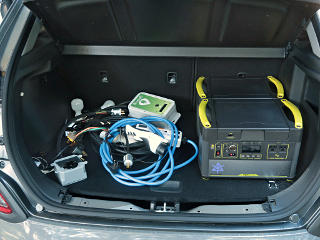
| The dealer had sent me off with a 100% charge in the battery, and I assumed that they had probably kept the car topped up close to that level over the months it was sitting on their lot. That's actually not so good for the lithium chemistry, which is most stable around mid-charge over long-term storage. While battery management systems have gotten quite good over time, their notion of net capacity can still drift, so it pays to let one re-calibrate its limits and coulomb count once in a while. My plan was to run that charge down as far as I possibly could before recharging for real. Everything I'd done with the car had been on that charge so far, and finally I was down to about 9% left one morning and figured this was the day to run 'er all the way down. |
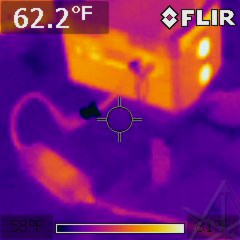
|
The Yeti had its fans screaming and was generating a little extra overhead heat, out the obvious pair of outlets in this infrared shot. But most of its energy really was going into the car. Considering how that translates to over 120 amps from its internal pack full of 18650 cells, that's not bad. |
| While the car was charging for the rest of the day, I happily busied myself with disassembling unrelated parts of it, as described in the "rip-n-tear" section -- at least going after parts that didn't require powering things down, since the basic "life support" systems had to stay up. It was kind of nice to get back into some of that again, since the early Prius days a decade-plus before, and frankly the physical aspects of how cars are generally put together and wired hadn't changed that much. | |
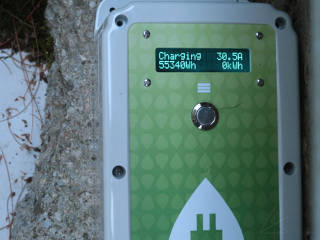
|
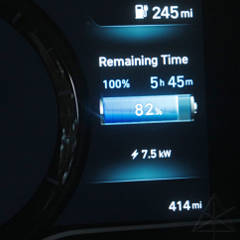
|
| Towards evening, a healthy quantity of energy had passed through the GoPlug, still going strong, and the car was approaching full. The time estimate was way off, though; I suspected all the interrupted level-1 screwing around with the Yetis had confused things a little. | |
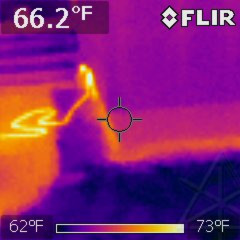
|
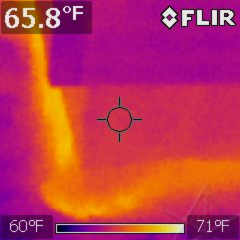
|
| Things had been running at full power [well, the 30 amps that the car wanted] long enough for the thermal situation to stabilize, and I took a scan quite a while after the sun had passed over the house and all this was in shade. The dirt right next to the house was indeed slightly warmer from the cable maybe three inches down, and it was amusing to be able to see the trace of where the wire loops out around the corner. The EVSE and wire to the car got slightly warm but nowhere did I see any worrisome "hot spots". You have to take the infrared scale endpoints into account here; all of it is a very small delta. The feed wire going through the basement was barely warmish to the touch, as was the breaker in the panel. | |
|
Observations like this are what help clinch my personal notion of "tipping
point" where electric vehicles are concerned.
I'd been saying for a while that once we could stuff about 300 miles worth
of *propulsive* energy into something about the size of a typical car's gas
tank, that would be a significant milestone for wide public acceptance.
The recent wave of longer-range cars like the Kona and its contemporaries
from other manufacturers get us just about to that point, with certain
caveats.
The Kona pack does take up more volume than a gas tank but tucks out of the
way quite unobtrusively, and careful driving would still be needed to
achieve that range top to bottom but it *is* doable.
To quote
Llewellyn's youtube review,
"this is a game changer".
Of course we'd probably have the 700 or thousand-mile packs in another couple of years, but this still represents an impressive technical ramp-up. |
_H* 191004